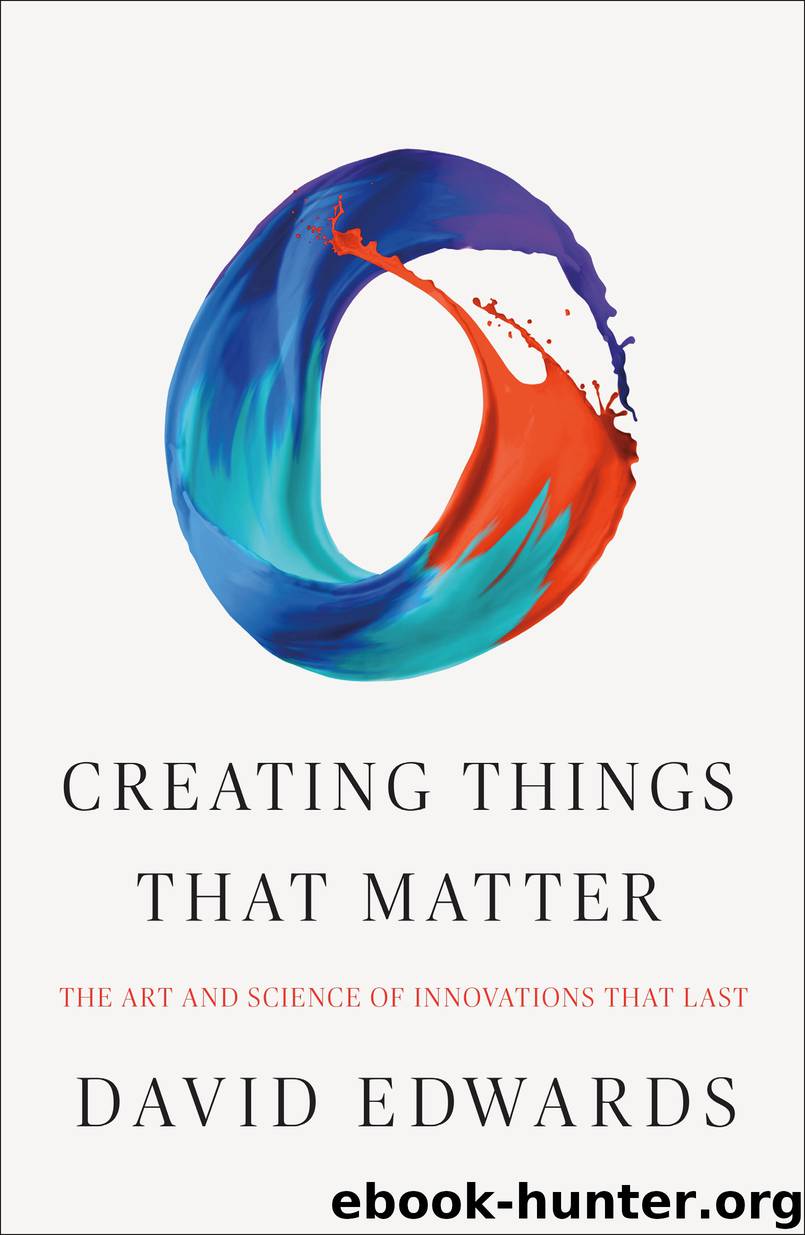Creating Things That Matter by David Edwards

Author:David Edwards
Language: eng
Format: epub
Publisher: Henry Holt and Co.
Figure 6. The second phase of creating things that matter tends to be the longest and most challenging. This iteration of the Creator’s Cycle slows down. Durability and survival in frontier conditions comes through intuition—a kind of gut intelligence—and willful innocence. This keeps pioneering creators, who are deeply aware of the risks they take, attentive and avid learners. Humility helps them learn fast, adapt, and not rely on a confidence that belongs to more familiar circumstances.
I walked out of Richard Garriott’s Manhattan town house after my last conversation with the gaming pioneer, remembering it as a shrine to a long, bumpy, and giddily varied creative journey guided by the intuition of moments that are past, the innocence of moments to come, and the humility to change paths on a dime as the human experiment moves on.
Mass Improvisation Culture
Hillis and Garriott create in the aesthetic way of Adrià and Langer. Their work exemplifies the second phase of creating, the long stretch between ideation and exhibition or experimentation—where many creators lose heart. These creators of digital things that matter take their time to figure it out, hanging around at new frontiers, running from secondhand experience, and endlessly learning. They exercise and reinforce all three dimensions of aesthetic creating that help them endure—intuition, innocence, and humility—and eventually discover.
They are improvisers, like all of us. Indeed, among the many consequences of digital creation, improvisation or behind-the-scenes experimentation is increasingly the crux of the performance. The traditional line between creator and audience vanishes, as it did in the death of Lord British.
Traditional cultural forms that have prescribed conventions—such as classical ballet, opera, and stage theater—have lost audience numbers, while fresh, raw, unscripted cultural forms with active audience participation—like reality television, improv rap, and online social networks—have grown exponentially. Mass audiences today are not just willing to enter into a creative conversation with inventors of things that have never existed before, they often take over the conversation. User-generated content has exploded as a consequence.
Theater may be dead, as the theater director Paul Sills liked to say, while theatrical improvisation seems to increasingly characterize what is culturally alive. Sills was the first director of Chicago’s Second City, the famous improvisational theater group whose actors went on to create some of the most resonant contemporary comic media programs from Saturday Night Live to The Colbert Report. His mother, Viola Spolin, founded American improvisational theater in the first half of the twentieth century. “We learn through experience, and by experiencing,” wrote Spolin in her classic text Improvisation for the Theater, which she finally published in its definitive form after the start of the Second City, “and no one teaches us anything.”
In Spolin’s words, experience is an environment penetrated by intellectual, physical, and intuitive sensitivity. Of the three, intuition is, for Spolin, the most essential. With improvisation, idea development resembles playing a game in which the idea, or the point of concentration, is a kind of ball.
We play ball. There is no star, no separation between one player and the next.
Download
This site does not store any files on its server. We only index and link to content provided by other sites. Please contact the content providers to delete copyright contents if any and email us, we'll remove relevant links or contents immediately.
POP by Steven Heller(3307)
Japanese Design by Patricia J. Graham(3109)
The Power of Broke by Daymond John(2897)
Architecture 101 by Nicole Bridge(2764)
Indistractable: How to Control Your Attention and Choose Your Life by Nir Eyal(2334)
Fusion 360 for Makers by Lydia Sloan Cline(2308)
Batik by Rudolf Smend(2124)
Actionable Gamification: Beyond Points, Badges, and Leaderboards by Yu-kai Chou(2122)
Origami Art by Michael G. Lafosse & Richard L. Alexander(2065)
Homebody by Joanna Gaines(2031)
Whiskey in a Teacup by Reese Witherspoon(1936)
Worn in New York by Emily Spivack(1926)
Feng Shui by Stephen Skinner(1901)
Austin Kleon by Steal Like an Artist(1887)
Simple Gatherings by Melissa Michaels(1855)
Don't Make Me Think, Revisited: A Common Sense Approach to Web Usability by Steve Krug(1826)
Hygge: The Danish Art of Happiness by Marie Tourell Søderberg(1693)
The Joy of Hygge by Jonny Jackson(1685)
The Laws of Simplicity by John Maeda(1568)
